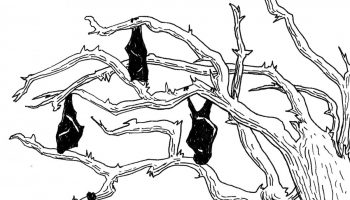Last Tuesday at the Olympic Aquatics Stadium in Brazil, one of the two pools turned green.
“Wait is someone playing a joke or are we celebrating St. Patty’s Day early here in Rio?” tweeted American diver David Boudia, along with a picture of the murky water.
The green diving pool sits yards from the other pool, perfectly clear, used for water polo. Photos of the juxtaposition went viral. Many questioned if the water was safe.
The Rio 2016 Local Organizing Committee conducted tests and determined the water’s safe, fingering an enemy familiar to any Chautauquan: algae, likely accelerated, it was announced Saturday, by someone pouring hydrogen peroxide into the pool.
“Unfortunately, algae gets the bad press,” said Courtney Wigdahl-Perry, assistant professor of biology at SUNY Fredonia. “But I always try to emphasize there’s a lot of good things algae can do instead of just turning pools green.”
Jennifer Phillips Russo, a graduate assistant working alongside Wigdahl-Perry to study the biology of lakes, will host a Lake Walk at 6:30 p.m. Monday at Heinz Beach. Phillips Russo will wade out into Chautauqua Lake, collect water samples and assist Chautauquans as they analyze those samples with provided microscopes.
Algae, as a term, encompasses a range of water-dwelling organisms, varying in size and appearance. Like plants, they create food through photosynthesis, which explains the green color of most algae.
The Chautauqua Lake Association holds aquatic vegetation at bay with its fleet of mechanical weed harvesters, physically tearing millions of pounds of weeds per summer from the lake. But Wigdahl-Perry said no comparable harvester exists for the much smaller algae, nor would it be very successful.
“They’re single cells, and they reproduce asexually,” she said about one type of algae. “All they have to do is split and then it’s gone — you have the ability for that bloom to take off.”
Most algae is harmless — even beneficial — but Chautauqua Lake sometimes experiences harmful algal blooms in the waning days of summer. Blue-green algae, called cyanobacteria, usually appears in the lake’s south basin where the water is shallower. In some years, the blooms make their way north to force beach closures at the Institution.
Wigdahl-Perry said the blue-green algae itself is a natural element of the ecosystem, one of the many algae species floating around the lake. It’s human activity, particularly fertilizer-rich runoff, that provides nutrients such as phosphorus and nitrogen to create uncontrolled algal blooms.
Harmful algal blooms can appear as a film on the surface of the water or mixed in the water below — Wigdahl-Perry said the algae is like a submarine, ascending and descending to adjust to favorable lake conditions with a gas-filled vacuole.
Beyond causing rashes on humans, excessive blue-green algae can throw off the food web. The bloom eventually dies, and that matter decomposes at the hand of bacteria, which eliminates the oxygen in the water supporting everything from plankton to fish.
Even when the bloom is alive, Wigdahl-Perry said cyanobacteria aren’t favored by the organisms that typically consume other types of algae.
“It’s sort of like the difference between eating a nice green, spring mix salad versus trying to chew on a Big Mac that’s three times your size,” she said.
Absent a mechanism to remove every last cell of unwanted algae, Wigdahl-Perry said the solution to harmful algal blooms is improved stormwater management. The Chautauqua Watershed Conservancy, Chautauqua Lake Association and the Institution itself all agree, encouraging individuals to maintain buffer zones along the shore, plant rain gardens with native species and minimize impervious surfaces such as driveways and concrete walkways. Those measures absorb harmful runoff before it reaches the lake.
Some algae, however, is necessary and beneficial. Algae convert sunlight into usable energy for other species to consume; it’s basic food-web thinking that acknowledges algae, such as plant life, as the base that makes everything else possible. No algae, Wigdahl-Perry said, eliminates the area’s ability to sustain an ecosystem.
“If you didn’t have the algae as the bottom of that food web, you would have no fish and you would have no birds,” she said. “You would be swimming in a bathtub, essentially.”






